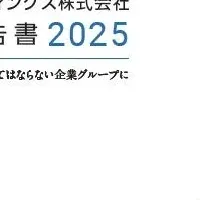
The Semiconductor Market Surge in Military and Aerospace Sectors Predicted to Hit USD 3.45 Billion By 2029
Semiconductor Market Growth in Military and Aerospace
The military and aerospace sectors are witnessing a transformative growth trajectory, particularly in the semiconductor market. According to a recent report by Technavio, the sector is projected to expand significantly by approximately USD 3.45 billion between 2025 and 2029, equating to a 6% compound annual growth rate (CAGR) during this period. This burgeoning growth is primarily driven by the increasing modernization of aircraft and the advancing role of technology, especially Artificial Intelligence (AI), in shaping market dynamics.
Key Factors Contributing to the Growth
1. Aircraft Modernization
The ongoing trend toward upgrading aircraft systems is one of the primary factors boosting the semiconductor market. As military and commercial aircraft alike undergo enhancements to improve performance and efficiency, semiconductor components—ranging from logic devices to memory chips—are becoming increasingly pivotal. These improvements are necessary to meet the rigorous demands of modern aerospace requirements, including enhanced navigation systems, improved communication technologies, and advanced radar capabilities.
2. Rising Demand for Unmanned Aerial Vehicles (UAVs)
The popularity of UAVs, commonly known as drones, is on the rise within military organizations. Their capabilities for remote surveillance and data collection make them valuable assets in modern warfare as well as border security operations. Countries like India and China are heavily investing in UAV technology, with India aiming to procure advanced drones for surveillance, while China showcases sophisticated military UAV technologies. This growing investments amplify the demand for semiconductors that power these systems.
3. Technological Innovations Driven by AI
AI’s influence is also driving this market transformation. The integration of AI technologies in semiconductors fosters greater efficiencies and intelligence in robotics and automation within the military and aerospace sectors. AI chips and machine learning capabilities are essential for developing sophisticated data processing systems and enhancing operational responsiveness.
4. Global Market Landscape
The Technavio report delineates market segmentation by various geographical regions—North America, APAC, Europe, the Middle East and Africa, and South America—with notable contributions from key players including Intel, Broadcom, Qualcomm, and others. These companies focus on various semiconductor products that cater to defense and aerospace applications, thereby reinforcing the market's competitiveness.
Challenges Facing the Market
While the growth forecasts are promising, several challenges pose potential hurdles. The high cost of semiconductor manufacturing supplies a significant barrier to entry for many companies. Establishing new semiconductor production facilities demands heavy capital investment, which often deters smaller companies from entering the market. Moreover, continuous upgrades of manufacturing equipment are essential to keep pace with the rapid technology advancements and changing market demands. As such, companies face a constant challenge to balance expenditures against the potential return on investments in this competitive environment.
Future Outlook
Despite the challenges, the overall outlook for the semiconductor market in military and aerospace appears robust. With continued investments in technologies such as the Internet of Things (IoT), 5G networks, and big data analytics, the market is poised for growth. Advancements in semiconductor technology—focusing on efficiency, reliability, and enhanced capabilities—will likely shape the future of defense applications and aerospace developments.
The report accentuates a critical need for innovation and strategic partnerships as companies navigate these evolving landscapes. By anticipating future needs and aligning objectives with technological advancements, stakeholders in the semiconductor industry can effectively capitalize on the burgeoning opportunities in both military and aerospace markets.
Topics Business Technology)










【About Using Articles】
You can freely use the title and article content by linking to the page where the article is posted.
※ Images cannot be used.
【About Links】
Links are free to use.